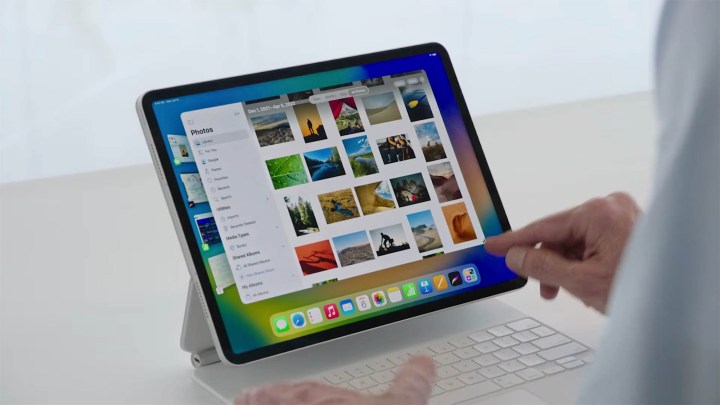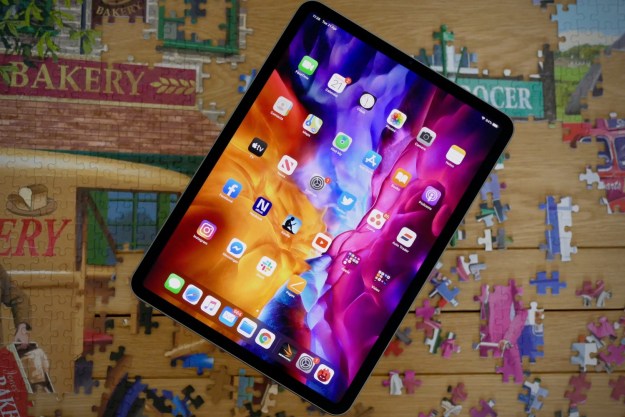At its Worldwide Developers Conference (WWDC) 2022, Apple announced numerous new features for iPadOS 16. One of the most prominent advances in the next-gen iPad software is the presence of more granular windows management, which Apple calls Stage Manager. The feature lets you resize tabs, reorder them, and group multiple apps together. For the first time in the history of iPads, you now have the option to play around with multiple windows simultaneously — although it’s also available on Mac.
While iPadOS 16 is compatible with tablets ranging from the A9-powered fifth-gen iPad, not all features will roll out to non-M1-powered machines — the most notable being Stage Manager. If you bought an iPad Air 4, 2020 iPad Pro, or another older model, you will not get Stage Manager with the iPadOS 16 update.

Why Stage Manager is limited to M1 iPads
That begs an interesting question. Why is Stage Manager limited to M1 iPads? In Apple’s iPadOS 16 press release, the company talks about new Display Zoom functionality that’s also exclusive to M1 iPads — and calls out a Virtual Memory Swap system that makes it possible. Per Apple, “With Virtual Memory Swap, iPad storage can be used to expand the available memory for all apps, and delivers up to 16 gigabytes of memory for the most demanding apps, helping to make multitasking absolutely seamless.”
If Display Zoom features that are exclusive to M1 iPads are only possible because of Virtual Memory Swap, it’s possible this is also true of Stage Manager. It’s not hard to imagine that a feature that’s able to handle this many active windows would require access to some additional memory.
Similar to what we’ve seen on Android devices, memory swapping allows apps to convert storage into RAM for more horsepower. The main draw of Stage Manager is that it allows users to run up to eight apps at once — a process that demands ample multitasking capability. Given the potential need for so much horsepower, requiring an M1 chip with Virtual Memory Swap starts to make sense.
Following Apple’s initial iPadOS 16 press release, the company elaborated on Stage Manager’s limited availability in a statement to Rene Ritchie. There, Apple explains that “Delivering this experience with the immediacy users expect from iPad’s touch-first experience requires large internal memory, incredibly fast storage, and flexible external display I/0, all of which are delivered by iPads with the M1 chip!”

Which iPads will get Stage Manager in iPadOS 16
iPadOS 16 is compatible with iPads powered by an A9 processor (going back to 2015) and above. By contrast, Stage Manager is limited to M1-powered iPads (launched in 2021 and 2022). Apple tablets that support Stage Manager include:
iPad Pro 12.9-inch: Fifth generation
iPad Pro 11-inch: Third generation
iPad Air: Fifth generation
What to expect with iPadOS 16 on non-M1 iPads
I’ve been using the iPadOS 16 Developer Beta on my iPad Air 4, and so far, it’s not a huge update. On paper, there are a plethora of features for non-M1-powered iPads — including updates to iCloud Shared Photo Library, Messages, Mail, Safari, and more. But all of these features can also be experienced on iOS 16. Without Stage Manager, you’re missing out on the one feature that makes iPads feel refreshing with iPadOS 16 if you have an iPad with an A-series chip.
Notably, if you own an iPad older than the one running on an A12 Bionic chip, you will also miss out on the all-new dictation experience, which is slated to make the voice, touch, and Apple Pencil input more seamless and fluid.
Update: In a previous version, this article included misappropriated attribution to Apple about the details of Stage Manager memory requirements.
Editors' Recommendations
- We finally know when Apple will announce its 2024 iPads
- Apple’s new iPad Pro and iPad Air just got delayed
- YouTube TV just got even better on iPhones and iPads
- I’m worried about Apple’s new iPads
- Apple may announce new iPads next month. Here’s everything we expect




